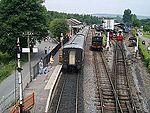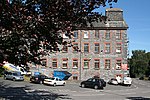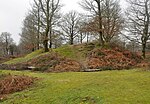Reed's Cave
Caves of Devon

Reed's cave is a cave in Higher Kiln Quarry near Buckfastleigh, Dartmoor, Devon. It has many formations including the unique Little Man formation, which is beyond Easter Chamber. Devon's only true troglobite collembolan Pseudosinella dobati is recorded from this cave. People are generally not allowed to enter Reed's Cave, but some entries are permitted during the summer months. Reed's Cave was once connected to Bakers pit but the connection has been filled in with concrete. Because of entry restrictions, the cave has become an important roosting site for Greater Horseshoe Bats.
Excerpt from the Wikipedia article Reed's Cave (License: CC BY-SA 3.0, Authors, Images).Reed's Cave
Russets Lane, Teignbridge Buckfastleigh
Geographical coordinates (GPS) Address Nearby Places Show on map
Geographical coordinates (GPS)
| Latitude | Longitude |
|---|---|
| N 50.484 ° | E -3.772 ° |
Address
Russets Lane
Russets Lane
TQ11 0DY Teignbridge, Buckfastleigh
England, United Kingdom
Open on Google Maps











